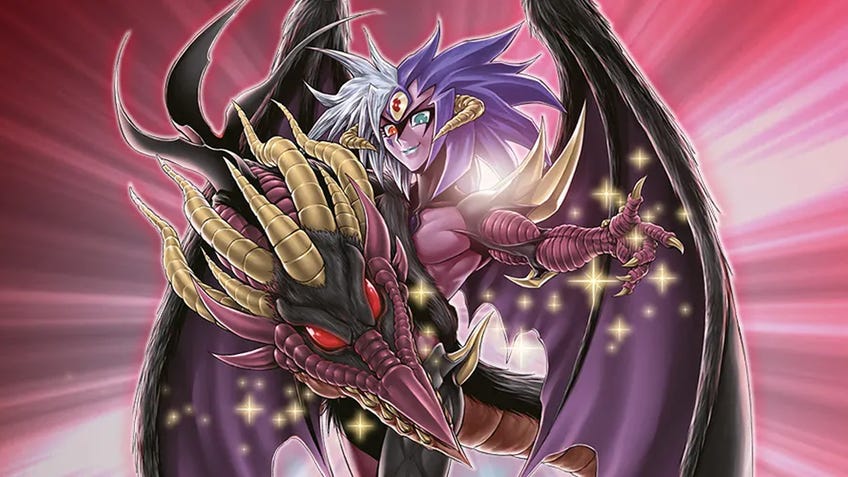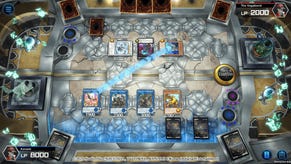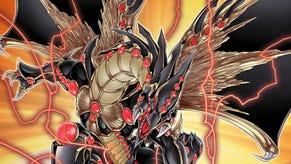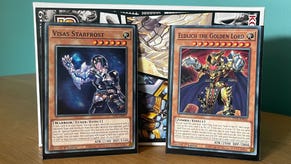6 best Phantom Nightmare cards in Yu-Gi-Oh!’s latest set
Dream pulls.
As we enter the year and month of the official 25th anniversary of the launch of the Yu-Gi-Oh! Trading Card Game in Japan in 1999, Western duelists have a chance to sample the first core booster set of the year. Phantom Nightmare comes hot on the heels of Maze of Millennia as an expansion with a number of powerful new archetypes and support for beloved legacy decks, while also including a few generic counterplay cards into the mix to throw a spanner in the works of any duelist on the quest for glory.
Best Phantom Nightmare cards Yu-Gi-Oh!
- Lo, the Prayers of the Voiceless Voice
- Majespecter Orthrus - Nue
- The Black Goat Laughs
- Veidos the Eruption Dragon of Extinction
- Aromalilith Rosemary
- Ultimeat Offering
There’s much to ponder with this newest Yu-Gi-Oh! set, and something for all players from glory-seeking competitive duelists to those looking for a fun duel with friends. Here are the best Phantom Nightmare cards to secure for your collection.
1. Lo, the Prayers of the Voiceless Voice
Keeping a Lo profile

While Lo may not be the boss monster of the new Voiceless Voice archetype that promises to make waves upon the release of Phantom Nightmare, it is the deck’s most important card and a cornerstone of many of its best combos. Despite being Level 1, the card can act as a single-card tribute for any Ritual monster the Ritual-themed deck wishes to summon thanks to its effect of being able to substitute itself for the entire tribute of any Warrior or Dragon Light Ritual monster. This substitution is also, crucially, not limited to once per turn.
It’s an important point to note when the card’s secondary effect (one that unfortunately is limited to once per turn) allows it to bring itself back onto the field from the graveyard if a Warrior or Dragon Ritual monster is summoned to the field. Cycling through copies of the card as much as possible in a single turn is key to many of the deck’s plays, allowing it to bring out powerful Ritual monsters like Skull Guardian, Protector of the Voiceless Voice with ease.
Through just a single copy of Lo, you can activate a copy of Barrier of the Voiceless Voice - another effect of Lo allows it to place one Voiceless Voice continuous spell or trap card face-up on the field - allowing you to search for a copy of Saffira, Dragon Queen of the Voiceless Voice, sending a Ritual spell from the deck to the graveyard to bring a monster like Skull Guardian to the hand. Banishing Saffira at this point will allow you to Ritual Summon Skull Guardian, bringing Lo straight back to the field. Quite a potent field in itself, even before we consider ways to further extend play from here.
2. Majespecter Orthrus - Nue
Here comes a Nue challenger
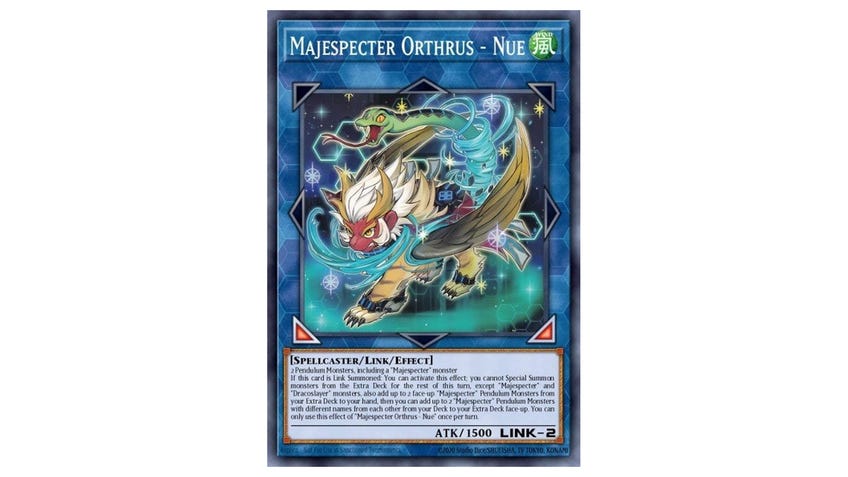
The Majespecter deck receives quite the upgrade in Phantom Nightmare. The Pendulum deck received new Pendulum monsters in Majespecter Raccoon - Bunbuku and Majespecter Porcupine - Yamarashi, the former of which gives the deck a new searcher to find its core combo pieces while the latter offers a powerful edge to the deck thanks to the ability to Special Summon itself during either turn. They’re both cards that improve the deck’s on-field presence and consistency, but also help the deck access its all-important Extra Deck.
Although Majespecter Draco - Ryu is certainly a card of note thanks to being simultaneously both an Xyz and Pendulum monster that can Special Summon from the deck up to twice per turn provided it has the material, it’s the new Link monster that’s perhaps most intriguing. Majespecter Orthrus - Nue is the perfect card for cycling monsters throughout areas of play, allowing the player to add up to two face-up Majespecter Pendulum monsters from the Extra Deck to the hand before then replacing them with two new monsters from the deck.
It’s a combination of support that gives the Majespecter deck a much-needed boost, improving its consistency and access to resources. Even a limitation on the power of a searcher like Nue to only allow Majespecter or Dracoslayer monsters to be Special Summoned for the remainder of the turn is of little concern when the deck is able to successfully load its Pendulum Zones and flood the field for access to its wide array of archetype Extra Deck monsters far easier than ever before.
3. The Black Goat Laughs
Laughing all the way to victory
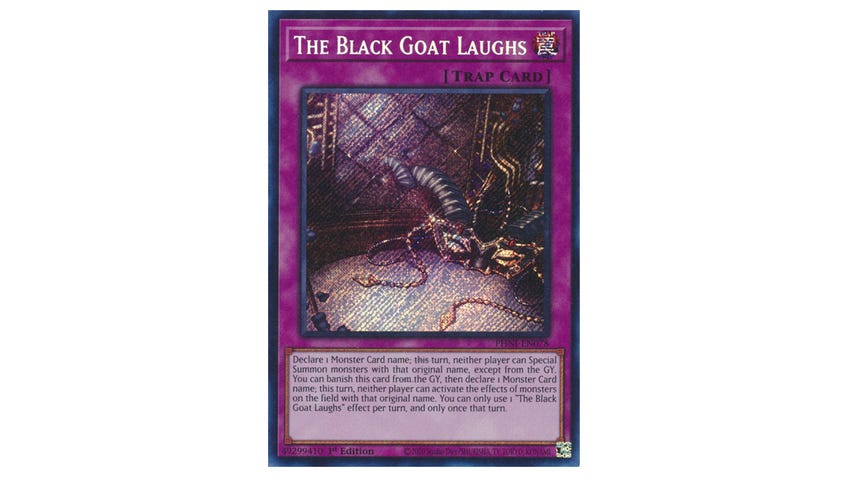
While not the best card for every deck, The Black Goat Laughs suits decks like Labrynth looking for something that can end the duel in your favour if used at the correct time. This Normal trap card is designed to stop opponents in their tracks; declare a monster card name, and neither player can Special Summon monsters of that name. Banish it from the graveyard and do the same thing, and you can prevent players from activating effects on the field for monsters with the same name.
While limited by only being able to activate a single effect of the card once per turn, preventing any shenanigans by activating the card in succession, it's still a powerful card that could see the occasional inclusion in Side Decks for countering decks like Snake Eyes or Fire King. In a deck like Labrynth, however, where Normal trap cards are an integral part of many combos whether specifically a part of the archetype or not, the chance to include a copy of this card in the main deck could boost the anti-meta potential of the deck in what promises to be a fast-paced, Special Summon-heavy format post-Phantom Nightmare.
4. Veidos the Eruption Dragon of Extinction
Destructive potential
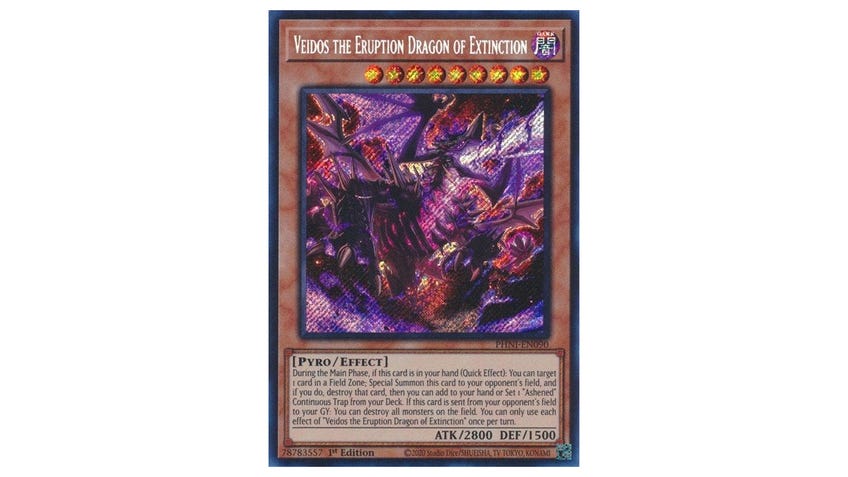
Ashened is the new TCG-exclusive archetype making its debut in Phantom Nightmare. While this first wave of cards feels like a strategy still awaiting the key card to send it into the competitive stratosphere, there is potential in the deck as it currently stands.
Veidos is certainly the card in the deck with the most potential, thanks to its effect of destroying all monsters on the field provided it's sent from the opponent’s side of the field to the graveyard. Considering it can summon itself there through its own effect by destroying a field spell such as the archetype’s own Obsidim, the Ashened City, and can be destroyed by Hero of the Ashened City through its effect, the task of wiping a 2800 ATK beast shouldn’t be as difficult a challenge as it may initially appear. It also doesn’t require you to target your own field spell, nor is it a requirement to wipe the board if you choose not to, making it a helpful card for removing field spells from your opponent.
It’s these conditions that could allow the card, either on its own or in conjunction with Hero and other cards from the archetype as a small engine, to find play in other decks while we wait for the support necessary to allow Ashened to thrive. That said, when coupled with the recent boost in Fire and Pyro monster support in this set’s own Promethean Princess, Bestower of Flames or Bonfire from Maze of Millennia, it’s certainly a formidable card worth paying attention to.
5. Aromalilith Rosemary
Flower power
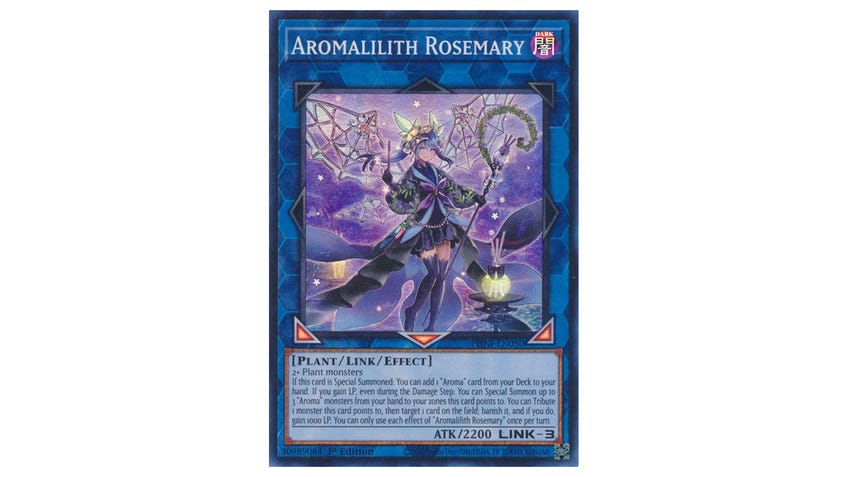
Could Plants be on their way to winning a third European Championship in a row, following the success stories of Marcus Patel and Jessica Robinson? With a card like Aromalilith Rosemary, it’s not out of the question.
Phantom Nightmare offers a wide array of new support to the Plant deck in the new set, including Aromalilith Rosalina and its effect to Special Summon a non-Tuner Aroma monster from the deck upon being summoned. The most exciting card from this new wave of support comes in the form of the Link-3 Aromalilith Rosemary.
One of the Plant deck’s biggest strengths is its ability to summon a formidable board on the back of just a single card; activating a single copy of Unexpected Dai can bring out Sunseed Genius Loci, opening up a Link Summon of Sunavalon Dryas that can spiral into a full board of formidable Extra Deck monsters if left unaccounted for.
Rosemary can extend the play even further. Upon its Special Summon, you can add an Aroma card from the deck to the hand, which opens up the potential to search for cards like Aromaseraphy Angelica or others in the Aroma engine. From here, the potential is limitless; use Angelica’s effect to discard itself to gain life points equal to a targeted Aroma monster’s effect and then use Rosemary’s effect to Special Summon new Aroma monsters from the hand into zones the card points to, use Angelica’s own effect to bring itself back, or perhaps do something else entirely.
Plants were powerful before and, even with the new limitation on cards like Sunavalon Dryas, now have the potential to become even more potent in a post-Phantom Nightmare landscape.
6. Ultimeat Offering
Deal with the Devil

This is more of a wildcard choice than some of the more obvious strengths present in the most recent set, but it’s certainly not a card to overlook. In much the same way that Vanity’s Emptiness made a major splash many years after once being dismissed as a useless common card, Ultimeat Offering is one Phantom Nightmare card that may not have much impact in today’s meta, but has the potential to change the game in the right format and deck that can take advantage of it.
There’s a reason the card which inspired it, Ultimate Offering, has been forbidden for many years until this point. This continuous trap card ripped up one of the foundational rules of the game - limiting players to a single Normal Summon per turn - all at the cost of just 500 life points, without a limitation on how often the effect could be used. Ultimeat Offering balances the idea of the original card in a few interesting ways. During your Main Phase at the higher cost of 1000 life points, you can perform up to three Normal Summons, rather than the typical one.
It could bring much-needed consistency and a resurgence to older, slower archetypes - my beloved but long-since irrelevant Madolche have been begging for a card like this, and decks like Traptrix or Fairy Tail could also make use of it - but the effect doesn’t stop there. During your opponent’s Battle Phase at the cost of 500 life points, you could Normal Summon a monster, potentially setting up a combo or putting up a last-gasp defensive line in the heat of conflict. Although held back as a trap card due to the fast pace of the modern game, and it likely won’t find much play in the short-term outside rogue and anti-meta decks far away from more typical tournament-winning strategies, it remains a notable point of consideration in the right Side Deck.
The reduced usage of cards removing spell and trap cards from play, coupled with its innate strengths, make it impossible to disregard the card entirely. The potential is there. Maybe keep a few copies on hand if you pull one from your Phantom Nightmare packs. You never know when it could be useful.
